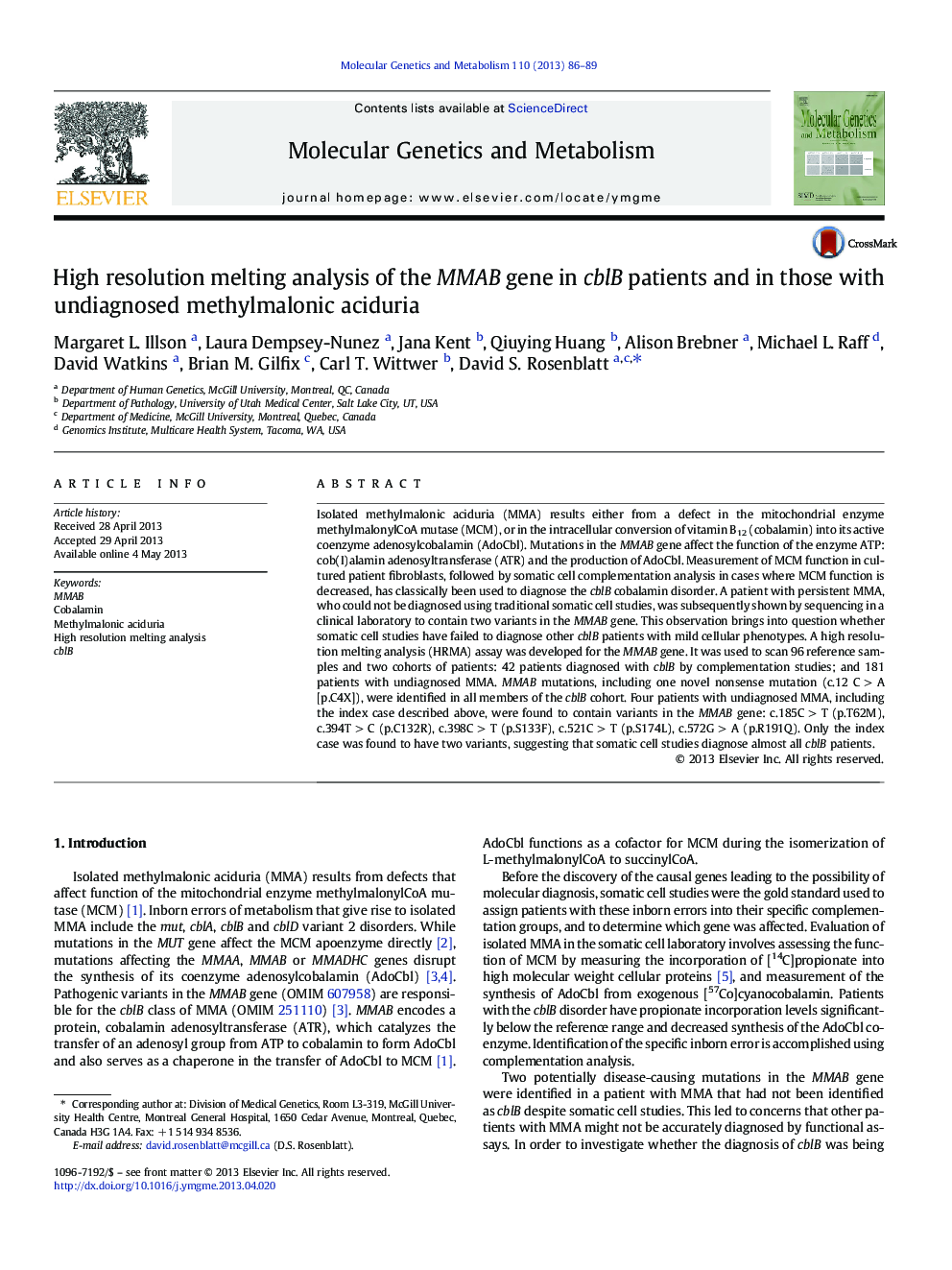| Article ID | Journal | Published Year | Pages | File Type |
|---|---|---|---|---|
| 8343991 | Molecular Genetics and Metabolism | 2013 | 4 Pages |
Abstract
Isolated methylmalonic aciduria (MMA) results either from a defect in the mitochondrial enzyme methylmalonylCoA mutase (MCM), or in the intracellular conversion of vitamin B12 (cobalamin) into its active coenzyme adenosylcobalamin (AdoCbl). Mutations in the MMAB gene affect the function of the enzyme ATP:cob(I)alamin adenosyltransferase (ATR) and the production of AdoCbl. Measurement of MCM function in cultured patient fibroblasts, followed by somatic cell complementation analysis in cases where MCM function is decreased, has classically been used to diagnose the cblB cobalamin disorder. A patient with persistent MMA, who could not be diagnosed using traditional somatic cell studies, was subsequently shown by sequencing in a clinical laboratory to contain two variants in the MMAB gene. This observation brings into question whether somatic cell studies have failed to diagnose other cblB patients with mild cellular phenotypes. A high resolution melting analysis (HRMA) assay was developed for the MMAB gene. It was used to scan 96 reference samples and two cohorts of patients: 42 patients diagnosed with cblB by complementation studies; and 181 patients with undiagnosed MMA. MMAB mutations, including one novel nonsense mutation (c.12 CÂ >Â A [p.C4X]), were identified in all members of the cblB cohort. Four patients with undiagnosed MMA, including the index case described above, were found to contain variants in the MMAB gene: c.185CÂ >Â T (p.T62M), c.394TÂ >Â C (p.C132R), c.398CÂ >Â T (p.S133F), c.521CÂ >Â T (p.S174L), c.572GÂ >Â A (p.R191Q). Only the index case was found to have two variants, suggesting that somatic cell studies diagnose almost all cblB patients.
Related Topics
Life Sciences
Biochemistry, Genetics and Molecular Biology
Biochemistry
Authors
Margaret L. Illson, Laura Dempsey-Nunez, Jana Kent, Qiuying Huang, Alison Brebner, Michael L. Raff, David Watkins, Brian M. Gilfix, Carl T. Wittwer, David S. Rosenblatt,
